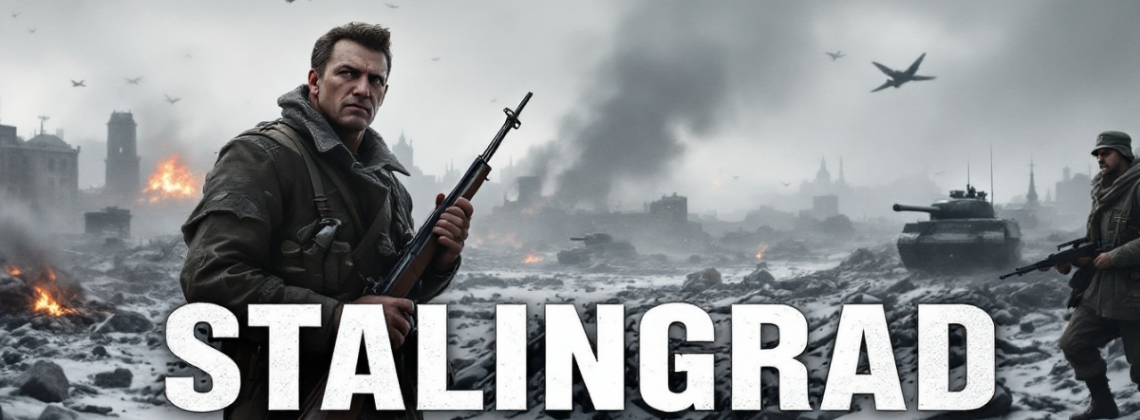
The Battle of Stalingrad stands as one of the most pivotal and harrowing chapters in World War II history. Synonymous with unparalleled sacrifice and strategic brilliance, it marked the point where the tide of the war shifted irreversibly. From August 1942 to February 1943, the city bearing Soviet leader Joseph Stalin’s name became the site of a brutal struggle that redefined the war’s trajectory. Let’s delve into the key stages of this epic confrontation and uncover the lessons it left behind.
The Stakes: Symbolism and Strategy
Stalingrad was more than just a city; it was a symbol of defiance and determination for both sides. Strategically perched on the Volga River, its capture would sever Soviet supply lines and deliver a crushing blow to Soviet morale. For Adolf Hitler, conquering Stalingrad was a matter of prestige, a direct challenge to Stalin himself. For Stalin, losing the city was simply not an option. It was a fight to the death.
As the German offensive began, the Luftwaffe unleashed devastating aerial bombardments, reducing much of Stalingrad to rubble. On the ground, the Wehrmacht advanced swiftly, believing they could replicate their earlier successes of rapid, mobile warfare. However, the Germans soon faced an unexpected and formidable adversary, the resilience of the Red Army and the brutal challenges of urban combat.
Urban Warfare: The City Becomes a Battlefield
Stalingrad became a sprawling maze of ruins, transforming into a battlefield where conventional German tactics lost their edge. Every street corner and building turned into a fiercely contested zone. Close-quarters fighting became the norm, with brutal skirmishes erupting over mere meters of ground. The Germans, accustomed to swift victories, found themselves mired in a protracted and grueling conflict.
Meanwhile, Soviet defenders, inspired by patriotic duty and driven by hatred for the invaders, refused to surrender. General Georgi Zhukov, a brilliant Soviet strategist, implemented a strategy of attrition to bleed the German forces dry. Soviet snipers, like the legendary Vasili Zaitsev, became key figures in the battle, striking fear into German troops. Even underground sewers and tunnels were weaponized to outmaneuver the Germans. The city’s defenders fought with an unyielding determination that began to shift the momentum of the battle.
Operation Uranus: Turning the Tide
In November 1942, the Soviet forces launched a daring counteroffensive, Operation Uranus. This meticulously planned maneuver aimed to encircle the German Sixth Army and their supporting divisions. Exploiting weaknesses in the German flanks, Soviet troops executed a pincer movement that successfully trapped the German forces within Stalingrad by November 23, 1942.
As the harsh Russian winter set in, the situation for the encircled Germans grew dire. Starvation, frostbite, and dwindling supplies took a devastating toll on the trapped soldiers. Despite Hitler’s orders to fight to the last man, the German Sixth Army faced an inevitable collapse. Relief efforts led by General Erich von Manstein failed, sealing their grim fate. On February 2, 1943, the remaining German forces surrendered, marking the end of the battle.
Legacy of Sacrifice and Resilience
The victory at Stalingrad shattered the myth of German invincibility and marked a crucial turning point in World War II. The Red Army, invigorated by their hard-fought triumph, shifted from defense to offense, pushing the Germans back toward Berlin. For the Allies, Stalingrad proved that the Axis powers could be defeated, galvanizing their resolve to continue the fight.
However, the human cost of the battle was staggering. Over two million casualties were reported, and the city of Stalingrad itself was left in ruins. Yet, amidst the devastation, Stalingrad became a symbol of Soviet resilience and the unyielding spirit of its people. This battle serves as a chilling reminder of the destructiveness of war, the importance of strategic planning, and the high price of freedom.
Reflections on a Turning Point
The Battle of Stalingrad was more than just a military confrontation, it was a testament to human determination and sacrifice. It reshaped not only the course of World War II but also the collective memory of warfare itself. The echoes of Stalingrad reverberate even today, reminding us of the resilience required in the face of overwhelming odds.
